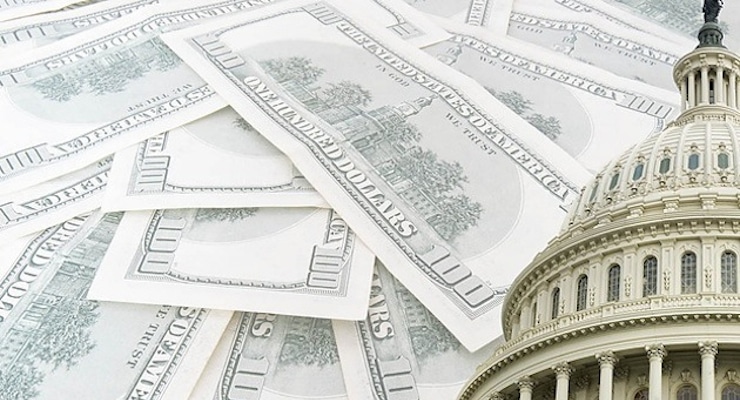

US national debt piles up next to the Capitol Building in Washington, D.C., where no one has the political courage to rise to the challenge of staving off the coming crisis.
Which state gets the biggest share of its budget from the federal government?
- Is it California, the left’s bizarre alternative universe?
- Is it Illinois, the poster child for big-government excess?
Nope, not even close. As a matter of fact, those two jurisdictions are among the 10-least dependent states.
And if you’re guessing that the answer is New York, New Jersey, Maryland, Connecticut, or some other “blue state,” that would be wrong as well.
Instead, if you check out this map from the Tax Foundation, the answer is Mississippi, followed by Louisiana, Tennessee, Montana, and Kentucky. All of which are red states!
Loading…
So does this mean that politicians in red states are hypocrites who like big government so long as someone else is paying?
That’s one way of interpreting the data, and I’m sure it’s partially true. But for a more complete answer, let’s look at the Tax Foundation’s explanation of its methodology. Here’s part of what Morgan Scarboro wrote.
State governments…receive a significant amount of assistance from the federal government in the form of federal grants-in-aid. Aid is given to states for Medicaid, transportation, education, and other means-tested entitlement programs administered by the states. …states…that rely heavily on federal assistance…tend to have modest tax collections and a relatively large low-income population.
In other words, red states may have plenty of bad politicians, but what the data is really saying – at least in part – is that places with a lot of poor people automatically get big handouts from the federal government because of programs such as Medicaid and food stamps. So if you compared this map with a map of poverty rates, there would be a noticeable overlap.
Moreover, it’s also important to remember that the map is showing the relationship between state revenue and federal transfers. So if a state has a very high tax burden (take a wild guess), then federal aid will represent a smaller share of the total amount of money. By contrast, a very libertarian-oriented state with a very low tax burden might look like a moocher state simply because its tax collections are small relative to formulaic transfers from Uncle Sam.
Indeed, this is a reason why the state with best tax policy, South Dakota, looks like one of the top-10 moocher states in the map.
This is why it would be nice if the Tax Foundation expanded its methodology to see what states receive a disproportionate level of handouts when other factors are equalized. For instance, what happens is you look at federal aid adjusted for population (which USA Today did in 2011). Or maybe even adjusted for the poverty rate as well (an approached used for the Moocher Index).
P.S. For what it’s worth, California has the nation’s most self-reliant people, as measured by voluntary food stamp usage.
P.P.S. And it’s definitely worth noting that the federal government deserves the overwhelming share of the blame for rising levels of dependency in the United States.







Scales ?? / January 15, 2017
There are no coincidences. https://t.co/NDGF5qqVbH
/
UnpaidRussianBot / January 15, 2017
I’m going to guess California, Illinois and New York before I read the article.
/
George M. Trotter / January 16, 2017
CALIFORNIA has got to be the biggest sanctuary state! NO FEDERAL FUNDING until they comply with OUR LAWS!
/